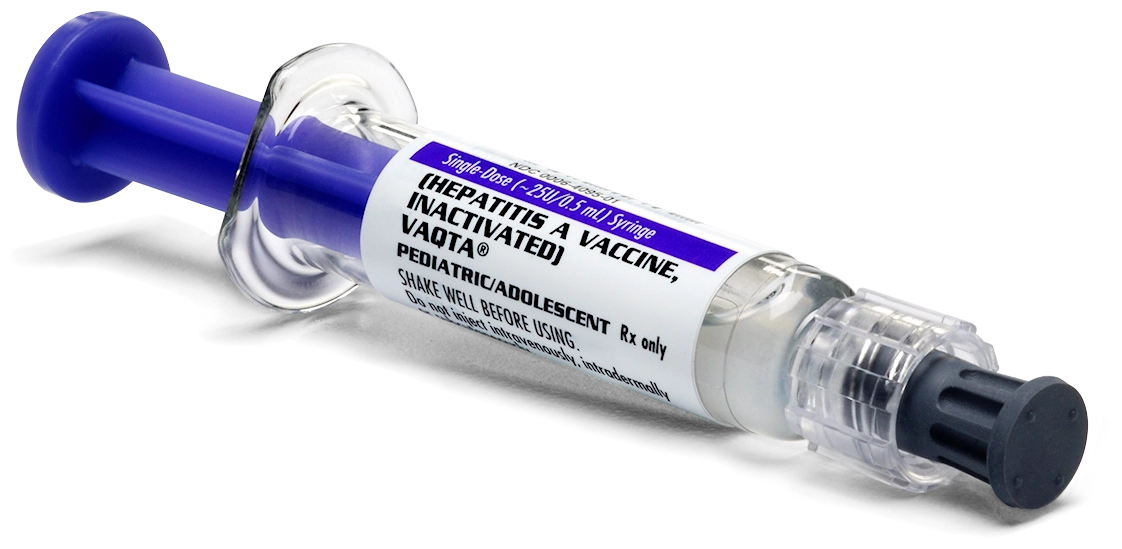Pediatric flexible dosing schedule
Available as a prefilled syringe


Not shown actual size
NDC 0006-4095-02
Flexible dosing window: VAQTA offers 6 more months compared to Havrix*,1
Interchangeability
VAQTA can be administered 6 to 12 months following a first dose of Havrix*
*Havrix is a registered trademark of GlaxoSmithKline.
ACIP catch-up vaccination recommendation2
Two-dose series for all children and adolescents aged 2–18 years not previously vaccinated (minimum interval: 6 months).
Patients who previously received 1 dose at age 12 months or older should receive dose 2 at least 6 months after dose 1.2
Catch-up vaccination opportunities
Well visits2,3,4
including back-to-school and sports-physical visits
Vaccine visits2
as appropriate
Sick visits5,a,b
including injuries or mild illness
aPatients who are moderately or severely ill should wait to be vaccinated until after recovery.6
Chronic care visits4,6
including weight check
bMost vaccines can be administered in cases of mild illness, after screening for contraindications and weighing the risks and benefits.6
Review the vaccines VAQTA can be concomitantly administered with:
References
- Havrix. Prescribing Information. GlaxoSmithKline; 2023.
- Advisory Committee on Immunization Practices (ACIP). Recommended child and adolescent immunization schedule for ages 18 years or younger, United States, 2024. Accessed June 25, 2024. https://www.cdc.gov/vaccines/schedules/downloads/child/0-18yrs-child-combined-schedule.pdf
- Centers for Disease Control and Prevention (CDC). Keeping Up to Date on Recommended Childhood Vaccinations. Last reviewed May 16, 2024. Accessed June 25, 2024. https://www.cdc.gov/vaccines/keepitthatway.html
- American Academy of Pediatrics (AAP). Bright Futures/AAP Recommendations for preventive pediatric health care (periodicity schedule). Updated June 2024. Accessed June 25, 2024. https://downloads.aap.org/AAP/PDF/periodicity_schedule.pdf
- Centers for Disease Control and Prevention (CDC). Vaccines When Your Child is Sick. Updated September 7, 2021. Accessed June 25, 2024. https://www.cdc.gov/vaccines/parents/visit/sick-child.html
- Kroger A, Bahta L, Long S, Sanchez P. General best practice guidelines for immunization. Best practices guidance of the Advisory Committee on Immunization Practices (ACIP). Centers for Disease Control and Prevention (CDC). Updated August 1, 2023. Accessed June 25, 2024. https://www.cdc.gov/vaccines/hcp/acip-recs/general-recs/index.html
